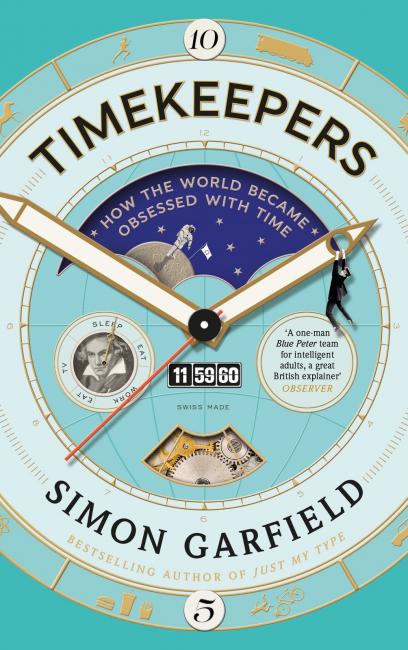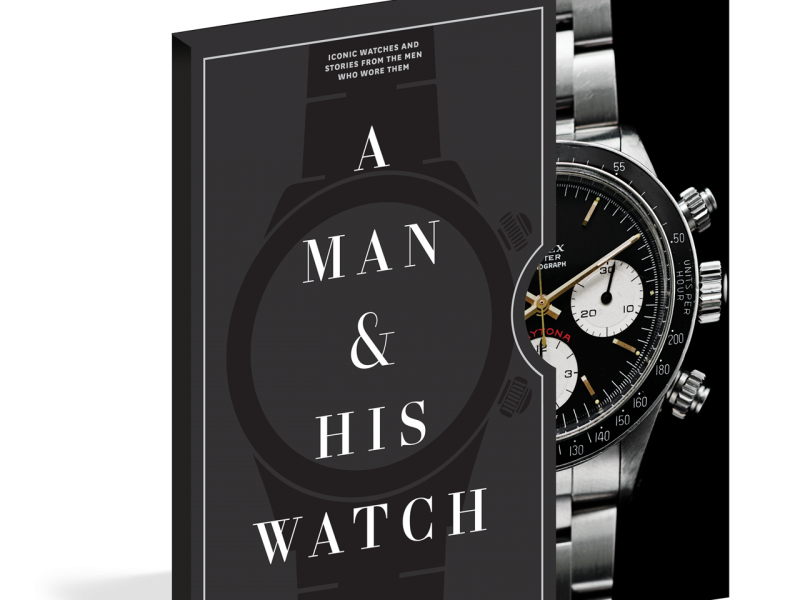Book Review: Simon Garfield’s Timekeepers

Timekeepers: How the World Became Obsessed With Time, by Simon Garfield. Publisher: Canongate Books; Main edition (29 Sept. 2016)
Simon Garfield is one of those few, happy, authors who have managed to turn their flickering curiosity into a source of income. After stints writing for the Observer, The Mail on Sunday and the Independent, he has turned his journalism into long-form investigations of, variously, the meaning of Typefaces, the significance of actual hand-written correspondence, and to the purpose of cartography (to name only a few of his more recent efforts). While there’s obviously a point to letter writing, fonts, and maps, the spur to Garfield’s curiosity in these cases is, somewhat predictably, the Internet. Or, more precisely, what technology in its many forms and applications has done to each of these (now) fading practices. With his most recent book, Timekeepers, time – our relationship to and perception of – gets the benefit of his attention. Benefit, because Garfield is no Luddite and Timekeepers is not out to shame those of us who spend too much of our day looking at our phones. Timekeepers explores, eccentrically and entertainingly, how we came to have our noses stuck to the glass and presents alternative ways of looking at and perceiving time. Not a physicist, Garfield doesn’t enter debates on whether time exists or not. He yields the stage to Stephen Hawking and others on that topic. Instead, Timekeepers tells the less abstract and more urgent story of technology’s impact on our perceptions of time. Classifying and measuring time in ever finer increments isn’t the main problem; making time ubiquitous through technology also isn’t the whole story. Our reliance on technology to order our lives is largely time-based (think of the “productivity apps” that promise to make you more efficient) and looking to it for a solution to feeling rushed all the time only compounds the problem. Instead of offering a packaged fix, Timekeepers chronicles how we got to where we are now and explores different ways of perceiving time. From a slow, seasonal, and cyclical appreciation of time’s passing (in the past, no one was too fussed about the village clock being off by half an hour or about the fact that it disagreed with the clock in the neighbouring town) to an industrial and mechanized emphasis on time in order to drive productivity, to the digital, light-speed time slicing of now, Garfield traces the evolution in measurement and perception that has many of us, to quote Bono, “running to stand still.”
Apart from the excursions into film, art, photography and the slow living movement, of interest to the watch enthusiast community are the chapters Garfield devotes to horology, particularly the industry as it stands today. It’s not that the information he imparts about the Swiss luxury industry is especially revealing (especially to clued-in watch nuts) but rather that he holds a unique position relative to the industry. Less biased than most, Garfield has no obvious investment in propping-up the industry and takes a sobering look at the apparatus that fuels our interest in watches. He finds parts of it admirable and parts faintly ridiculous. His Horology Part 1 chapter starts with an appreciation of the craft of making watches. Garfield visits IWC and takes a tourist class in watchmaking and spends much of it worried about dropping a tiny piece of the movement on the floor where nothing short of a magnifying glass will find it again. Making tiny, complicated machines is hard, and therefore expensive. In a footnote, he concedes: “In all the talk of the absurd cost of these timepieces, and the ingenious madness of the gimmickry, one is left dumbstruck by the beauty of the engineering.” We know this, but the myth that the Swiss are exclusive custodians of the kind of skill required to make the watches we love is exposed as just that through his conversations with Nicholas Hacko, an Australian watchmaker. Again, watch nerds know this is a myth too, and two easy counter-examples of Japan and Germany are often cited as centres of skill and tradition outside of Switzerland, but the struggles of independent watchmakers like Hacko to procure the parts necessary to repair and make watches reveal that these restrictions are programmatic. The Swiss retain their reputation partly by cultivating watchmaking skills within their borders but also, systematically, by ensuring other parts of the world can’t get what they need to develop those skills. In our franker moments, we would concede that not everything our favourite Swiss brands do to preserve their market share (by sales: the Swiss only account for a small percent of the total watches sold in the world, but account for well over half of the total value) is sporting, but Timekeepers doesn’t have to pull its punches. And it doesn’t.
But Garfield isn’t finished. His second chapter on Horology is subtitled “How to Sell the time,” and is more direct in its criticisms of the Swiss watch industry. Looking at the way watches are marketed, he cherry picks some egregious examples of ad copy and takes us on a walking tour of the, to him, puzzling excesses of Baselworld. Gigantic aquarium as part of a brand’s pavilion at the show? Why? Because they can. Playing the naïf, Garfield’s requirements for a watch that tells the time meet the luxury manufacturer’s marketing machinery with predictable results. Here, it’s Garfield’s satire that seems a bit tone deaf and mocking luxury marketing is a bit like shooting fish in a barrel in the first place. He does hit on the underlying principle that makes buying a luxury, and entirely superfluous, watch work: narrative. We buy stories more than watches and brand marketers certainly know this. Citing Bremont as one noteworthy example: “Bremont has made a name for itself by including tiny pieces of historic objects within its timepieces and then advertising the shit out of them with a narrative description worthy of Robert Harris.” Revealingly, Garfield’s discussions with power brokers at the event disclose that the pin that could burst this bubble is not the literalist criticisms of a journalist, nor the threats posed by smart watches. The real threat is when men wearing other kinds of jewellery becomes socially acceptable.
It’s a sobering look at a world we love, but it’s carried off with a genial flair by Garfield. He’s not writing a manifesto. Garfield wraps up his introductory chapter by promising “that…we will track down the person responsible for the adverts that claim ‘You never actually own a Patek Philippe, you merely look after it for the next generation,’ and try not to kill him.” The enmity is tongue in cheek, because what troubles Garfield about the slogan is not its fake ad-world depth, but its effectiveness. After his journey through Baselworld and luxury marketing hype, he still wants the watch.



